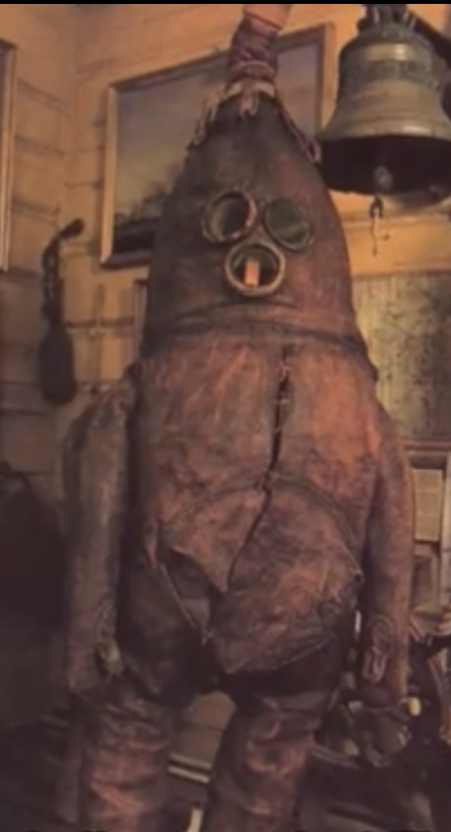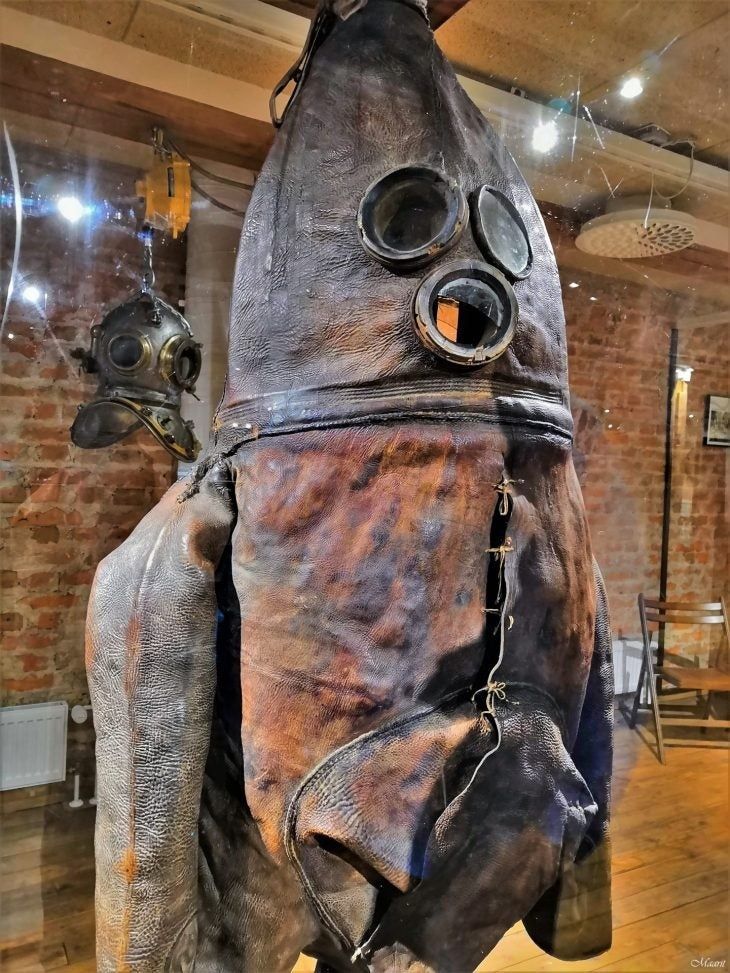Ancient Dive: Introducing Finland’s Earliest Diving Suit, the “Old Gentleman of Raahe”

In the annals of maritime history, amidst the tales of brave sailors and intrepid explorers, lies a lesser-known but equally fascinating story – that of the “Old Gentleman of Raahe,” Finland’s earliest known diving suit. This remarkable artifact, dating back to the 1700s, stands as a testament to human ingenuity and the enduring quest for exploration beneath the waves.
The journey of the “Old Gentleman” began centuries ago, in an era when the seas held untold mysteries and dangers for those who dared to venture into their depths. It was a time of great maritime exploration, when sailors and merchants traversed the globe in search of new lands and riches beyond imagination.

But amidst the grandeur of ocean voyages and exotic ports of call, there existed a need for a different kind of exploration – one that delved not into distant lands, but into the hidden realms beneath the surface of the sea. Thus, the concept of underwater diving was born, and with it, the need for protective suits to enable divers to explore the ocean depths.
The “Old Gentleman of Raahe” is one such suit – a relic of a bygone era, preserved for posterity in the hallowed halls of the Raahe Museum in Finland. Its origins shrouded in mystery, the suit first came to light in the 1860s, when Captain Johan Leufstadius, a seafarer of renown, donated it to the museum.
At first glance, the “Old Gentleman” appears unassuming – a bulky assemblage of leather and metal, with crude yet functional design elements reminiscent of its time. Yet, upon closer inspection, its true significance becomes apparent. The suit’s remarkable preservation speaks to the skill and craftsmanship of its creators, who fashioned it with care and precision to withstand the rigors of underwater exploration.

But who were the masterminds behind this early diving apparatus, and what inspired its creation? The exact origins of the “Old Gentleman” remain a subject of speculation and debate among historians and archaeologists. Some believe it to be the handiwork of Finnish artisans, crafted with ingenuity and expertise characteristic of the region’s maritime tradition.
One clue to its origins lies in the design of the suit’s feet and hands, which bear a striking resemblance to the boots and mittens worn by Finnish sailors of the time. This observation has led some experts to theorize that the “Old Gentleman” was indeed made in Finland, perhaps by skilled craftsmen seeking to equip local divers with the tools they needed to navigate the underwater world.

Regardless of its origins, the “Old Gentleman of Raahe” stands as a symbol of human resilience and exploration. It reminds us of the courage and ingenuity of those who came before us, who braved the unknown depths in search of knowledge and adventure. And as it rests silently in the museum’s collection, it continues to inspire curiosity and wonder, inviting us to delve deeper into the mysteries of our maritime past.
In the end, the story of the “Old Gentleman of Raahe” is not just a tale of a diving suit, but a testament to the enduring spirit of discovery that defines our shared human experience. As we gaze upon this ancient artifact, we are reminded of the boundless possibilities that await those who dare to venture into the unknown – both beneath the waves and beyond.











